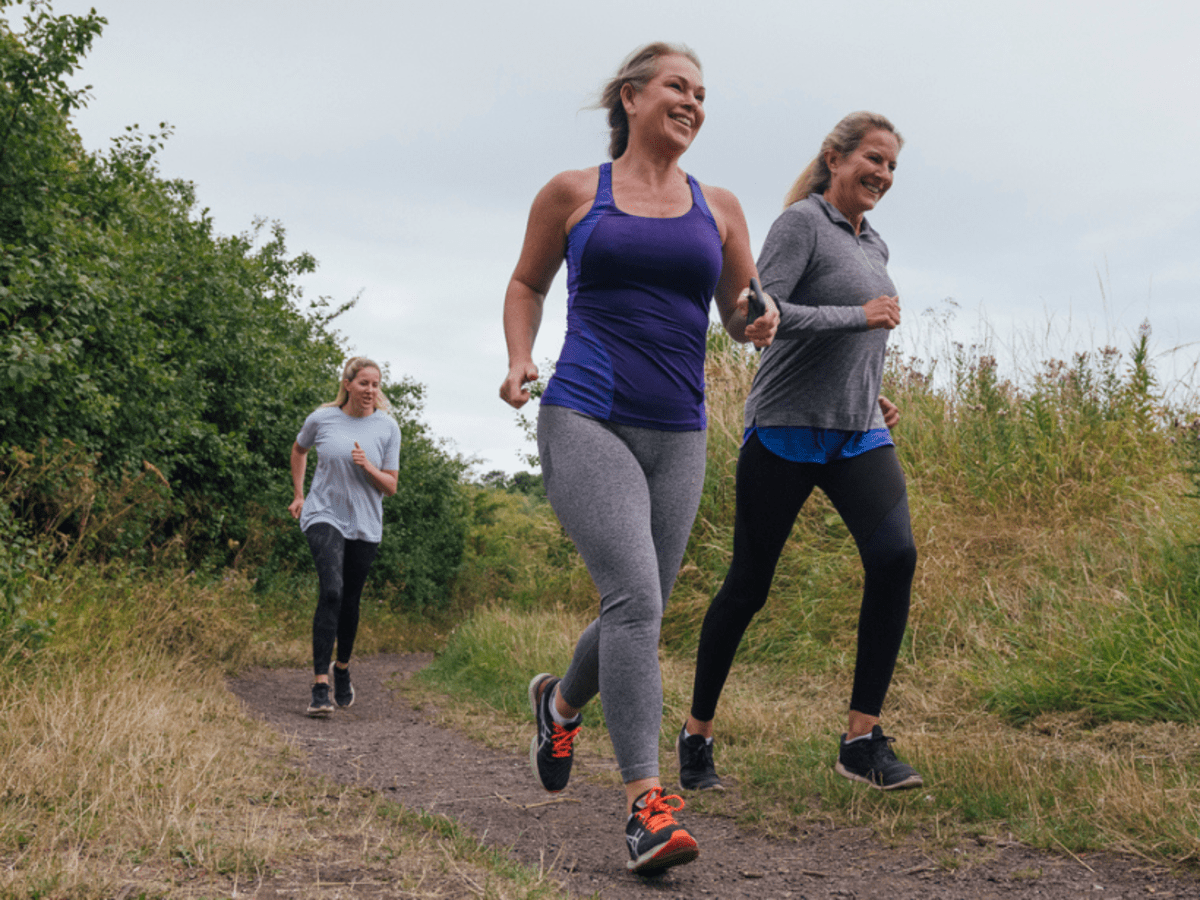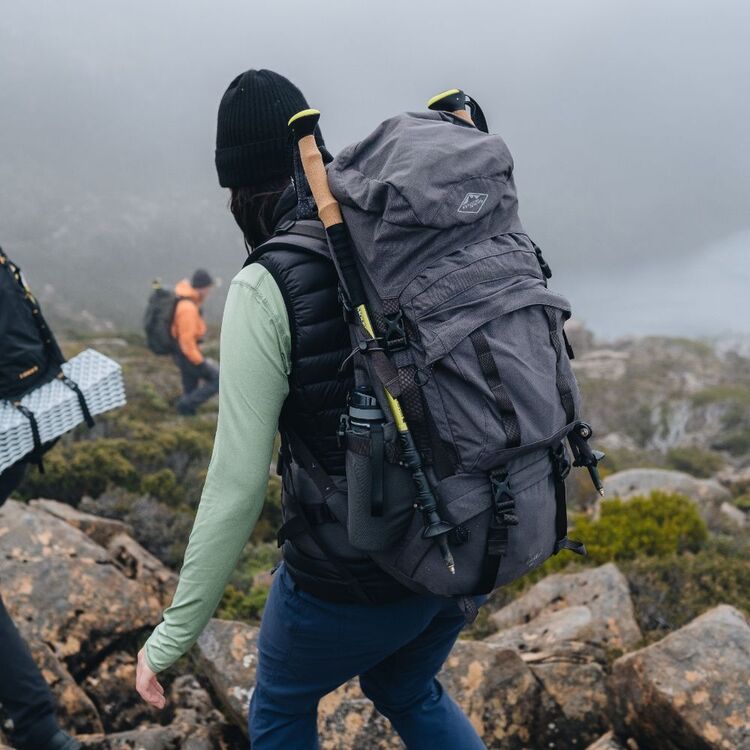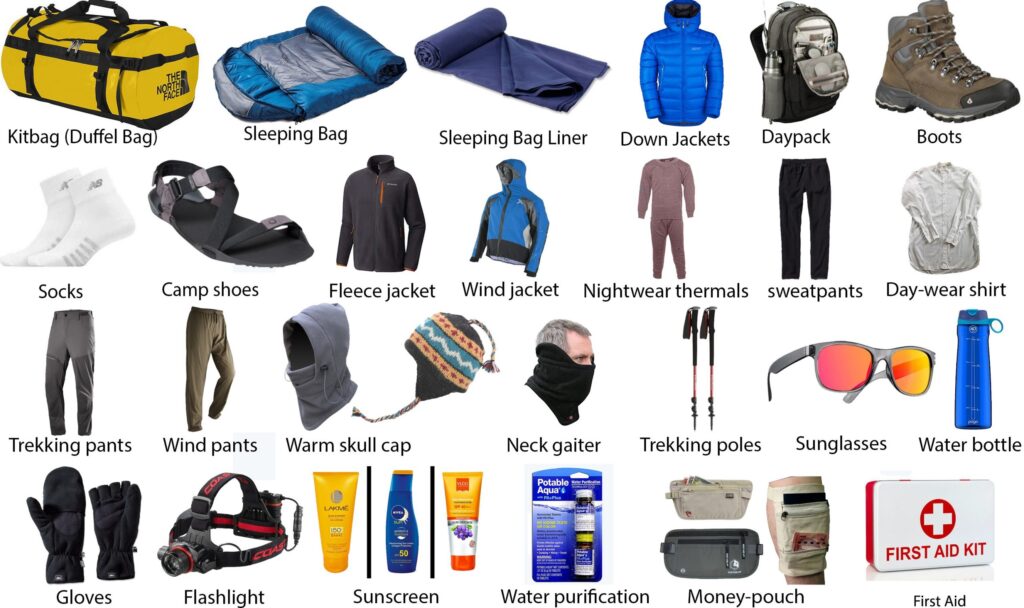Mount Kilimanjaro - Climbing Tips 2024 / 2025
- Getting to Tanzania
- Mount Kilimanjaro Route
- Accommodation in Tanzania
- Mount Kilimanjaro Quick Facts
- Preparing and Training for Climbing
- Packing List
- Climbing Equipments and Gear List
- Weather on Mount Kilimanjaro
- Safety on Kilimanjaro
- Climbing Crew
- Kilimanjaro Climbing & Camping Conditions
- Kilimanjaro Trekking FAQ's
- Mount Kilimanjaro Climbing Guide
Embark on an extraordinary adventure to Mount Kilimanjaro, Africa’s loftiest peak, soaring majestically at 5,895 meters (19,341 feet) above sea level. Nestled in Tanzania, this dormant volcanic mountain boasts three distinctive cones: Kibo, Mawenzi, and Shira, forming a captivating backdrop for intrepid trekkers in search of a challenging and gratifying journey.
The ascent to Kilimanjaro’s summit traverses five diverse ecological zones, ranging from lush rainforests to expansive alpine deserts. Owing to the altitude, the climb demands physical endurance and meticulous preparation, including essential acclimatization. Yet, armed with the right gear, training, and guidance, conquering Kilimanjaro becomes an attainable and unforgettable endeavor for passionate trekkers.
Standing atop Kilimanjaro’s pinnacle is a stirring and emotional experience, marking a triumphant achievement for trekkers who have faced both physical and mental challenges. The panoramic views from Africa’s zenith evoke awe, instilling a profound sense of wonder and gratitude. Completing the arduous journey fosters a deep-seated satisfaction and pride in the accomplishment.
Planning a Kilimanjaro climb requires careful consideration, as lack of information often leads to inadequate preparation, jeopardizing the ascent. Our guide addresses common pitfalls, offering insights into high-altitude acclimatization, necessary equipment, optimal trekking seasons for safety and comfort, and travel logistics. It aims to equip climbers of all ages and fitness levels with the knowledge needed to navigate the ascent successfully.
Amidst the surge in interest for Kilimanjaro climbs, our guide aims to raise awareness about overlooked safety measures and preparation essentials. Frequently, tour companies downplay the challenges, emphasizing ease while neglecting vital aspects like high-altitude acclimatization. We prioritize safety over client numbers, aiming to inform and empower climbers for a secure and enjoyable journey.
In essence, the prime periods for a Kilimanjaro expedition are from early June to late September and late December to late February—characterized by minimal rain and abundant sunshine, ensuring optimal conditions for breathtaking views and a comfortable ascent. Explore our article for an in-depth look at the best seasons to scale Kilimanjaro, gaining valuable insights into making your climb both safe and memorable.
TANZANIA CLIMATIC SEASONS
| MONTHS | JAN | FEB | MAR | APR | MAY | JUN | JUL | AUG | SEP | OCT | NOV | DEC |
| WEATHER |  |
 |
 |
 |
 |
 |
Mountain Kilimanjaro
GETTING TO TANZANIA
Kilimanjaro International Airport
Widely recognized as the “Entrance to Kilimanjaro,” Kilimanjaro International Airport (JRO) serves as the inaugural juncture for numerous journeys embarking on Kilimanjaro treks.
Getting to Tanzania
Various global airlines connect passengers to Tanzania, and among the top recommendations are Turkish Airlines, Qatar Airways, Ethiopian Airlines, KLM Royal Dutch Airlines, and Flydubai.
To experience the wonders of Tanzania, a regular tourist visa is required for your visit. Conveniently, you have the option to either apply for your visa online or acquire it upon arrival. The visa fee stands at $50, ensuring a straightforward process for your travel arrangements.
Mountain Kilimanjaro
Mount Kilimanjaro Map and Routes
Embark on the ascent of Mount Kilimanjaro, where a myriad of routes unveils unique features and diverse difficulty levels, shaping each climb into a distinctive adventure.
Acclimatization emerges as the linchpin for a triumphant summit, with the axiom holding true: the longer the route, the greater the window for acclimatization. Let’s delve into concise descriptions of each route, scrutinizing their merits and demerits.
Marangu Route: Esteemed as the “Coca-Cola” route, this venerable path blends ease with popularity. Characterized by huts for overnight stays, it caters to those favoring comfort. Yet, its swifter ascent demands caution, potentially curtailing acclimatization time and elevating the risk of altitude sickness. Completion spans 5-6 days.
Machame Route: Unfurling as a tapestry of scenic vistas and varied terrain, the Machame Route entices with its beauty. A protracted journey allows for superior acclimatization, offset by the challenge of steep ascents that demand robust fitness. The Machame Route unfolds over 6-7 days.
Lemosho Route: Unveiling a newer, less trodden path, the Lemosho Route captivates with its scenic splendor and diverse wildlife. Its extended trajectory fosters robust acclimatization, offering a gradual ascent less demanding than other routes. However, remoteness and duration inflate costs. The Lemosho Route encompasses 7-9 days.
Rongai Route: Less traversed and approaching from the north near the Kenyan border, the Rongai Route immerses trekkers in pristine wilderness. Balancing scenic allure with solitude, it allows for gradual acclimatization. Yet, remoteness extends the trek’s duration and expenses. The Rongai Route unfolds over 6-7 days.
Northern Circuit Route: Embracing length and splendor, the Northern Circuit Route epitomizes the pinnacle of scenic grandeur. Offering a serene trek with ample acclimatization opportunities, it balances peace with accomplishment. The length, however, poses a challenge to time-strapped trekkers, accompanied by higher costs. Completion stretches over an extensive timeframe.
Umbwe Route: Culminating as the swiftest ascent, the Umbwe Route is tailored for time-conscious trekkers completing the climb in 5-6 days. Yet, its brevity amplifies the challenge, demanding heightened fitness and experience from those seeking a brisk but demanding climb.
MOUNT KILIMANJARO QUICK FACTS
Height: 19,340 ft / 5,895 m
Type: Stratovolcano
Location: 330km South of the equator on the East African coast
Peaks: Kibo, Mawenzi, Shira
Climate zones: Rainforest, Heather, Moorland, Alpine, Arctic
Cities nearby: Moshi (Kilimanjaro region), Arusha (Arusha region)
Closest airport: Kilimanjaro International Airport (JRO)
First, climb: 1889, Hans Meyer and Ludwig Purtscheller
Fastest ascent: 6 hours and 42 minutes in 2014 by the Swiss Karl Egloff
PREPARING AND TRAINING FOR CLIMBING

Fitness for Kilimanjaro Climb
While scaling Mount Kilimanjaro doesn’t demand extraordinary mountaineering prowess, enhancing your physical fitness can significantly elevate the enjoyment and memorability of the experience. Being in good physical shape adds a layer of fulfillment to the journey. It’s not a prerequisite to be an athlete; rather, if you find yourself comfortably covering up to 15 km per day on foot, you can confidently deem yourself physically ready for the ascent of Kilimanjaro.
Simultaneously, incorporating some fundamental exercises into your routine can optimize your fitness level for the Kilimanjaro hike, ensuring you’re well-prepared for the challenges that lie ahead.
Mistakes of the physically fit climbers
Exceptional climbers often find themselves at risk of pushing their limits by hiking too rapidly, especially during the early stages of the ascent. Surprisingly, even the most physically fit climbers, including seasoned athletes, have been known to abandon their climb after just three to four days, while their less fit counterparts continue on to reach the summit. Granting yourself ample time for acclimatization becomes imperative.
Keep in mind: while maintaining a high level of fitness aids in combatting fatigue, its impact on the acclimatization process remains only moderately influential. Regardless of your fitness prowess, adopting a slow pace is crucial. Always remember, no matter how physically capable you are, the key is to traverse the terrain at a measured and deliberate speed.
Cardio (aerobic) training:
Embarking on the ascent of Mount Kilimanjaro calls for strategic preparation, particularly focusing on elevating your cardiovascular endurance to navigate the challenges posed by high altitudes and diminished oxygen levels. Engaging in dynamic activities such as running, cycling, and swimming becomes pivotal, serving as the catalysts for enhancing your overall cardiovascular fitness. These pursuits not only fortify your physical resilience but also lay the foundation for a more triumphant journey as you conquer the towering heights of this majestic mountain.
Strength training
Cultivating resilience in your legs and core proves instrumental for conquering steep inclines and navigating uneven landscapes with poise. Infuse variety into your workout routine with exercises such as squats, lunges, and leg presses to fortify leg muscles. Meanwhile, foster core strength through planks and sit-ups, establishing a robust foundation for your physical readiness.
For those venturing into aerobic activity after a hiatus, we advocate initiating training 2-4 months prior to embarking on the Kilimanjaro expedition. Conversely, if you maintain a consistent training regimen, continuity is key.
Simultaneously, consider affording yourself a brief respite from exercise a couple of weeks before the climb. This strategic pause allows your body to rejuvenate, ensuring you approach the Kilimanjaro ascent with well-rested vigor.
Hiking trips in the countryside
In essence, the Mount Kilimanjaro expedition entails an extensive trek across frequently challenging mountain terrain, featuring a series of ascents and descents. Embarking on brief day trips (with a recommended hiking duration of 5-10 hours) through the countryside proves invaluable for gaining insights into the upcoming adventure and getting adequately prepared.
Furthermore, these excursions serve as an excellent opportunity to break in any new boots acquired for your Kilimanjaro ascent. Tackling the mountain with footwear that has not been previously worn can potentially diminish the overall experience, causing discomfort in the form of soreness and blisters. Hence, these preliminary day trips become not only a preview of the adventure but also a practical means to ensure your gear is as ready as you are for the journey ahead.

Kilimanjaro Packing List
Prepare for your Kilimanjaro expedition by ensuring you have all the essentials packed. Give special consideration to the following:
Important Documents:
Passport: Ensure it’s valid for at least 6 months from your planned return date.
Visa: Unless you qualify for visa-on-arrival, make sure to obtain it in advance.
Yellow Fever Vaccination: If you’re arriving from a region with a yellow fever risk, ensure you have the necessary vaccination documentation.
Essential Climb Essentials
Gear Up for Kilimanjaro – Explore our guide to assemble the perfect ensemble for your Kilimanjaro expedition. Keep in mind, subpar equipment and untested hiking boots can effortlessly transform what should be a once-in-a-lifetime adventure into a potential disaster.
Personal Health Preparations
If you harbor any medical concerns, consult with your physician before embarking on the climb and ensure you pack any necessary medications. While our guides are equipped with standard medical kits for common emergencies, it’s crucial to address any specific medical needs, such as insulin or antiallergens.
Fuel for the Journey
While the journey to the summit of Mount Kilimanjaro includes provided meals and drinks, it’s wise to pack a reasonable supply of your preferred snacks and energy bars. Because when it comes to trekking, having a personal stash ensures you’re always prepared for the unexpected.
Climbing Equipment and Gear List
While your guiding service ensures the provision of camping equipment, the onus is on you to curate your personal hiking and clothing gear. The selections you make will significantly influence the level of comfort and safety you attain during your Kilimanjaro adventure.
Embark on a journey through five distinct climatic realms, navigating from the steamy rainforest with its sultry atmosphere to the icy expanses atop Mount Kilimanjaro, where temperatures plunge below freezing. Adequate preparation is key.
In essence, your hiking gear ensemble should feature lightweight attire for the initial days of your expedition, transitioning to warmer layers for the mid-section, and culminating in a robust, insulated ensemble for the pinnacle night. Don’t forget to pack an insulated waterproof jacket, pants, and a rain poncho, as tropical downpours are not uncommon on Mt Kilimanjaro. A high-quality sleeping bag is an absolute necessity. Overall, readiness for scorching days (+25°C) and frosty nights (-15°C) is imperative.

Investing in top-notch, durable hiking boots is a paramount necessity for conquering Kilimanjaro. Opting for training sneakers won’t suffice; they are advisable for camp strolls but ill-suited for the climb. The pivotal difference in your journey lies in well-broken-in, high-quality hiking boots as you ascend Africa’s highest peak.
Prioritize purchasing superior gear, but don’t limit yourself to exclusively renowned brands—there are cost-effective alternatives available. However, steer clear of the cheapest models and counterfeit products. Ensure your boots strike the right balance, neither too loose nor too snug, to ward off sores, blisters, and potential injuries.
Acknowledging the potential costliness of acquiring all necessary gear, contemplate the practicality of renting some items or the entire kit from Kilimanjaro’s local rental shops. This pragmatic approach allows you to access quality equipment without incurring the full expense upfront.
WEATHER IN MOUNT KILIMANJARO
Kilimanjaro’s weather undergoes distinct seasonal shifts, influencing the optimal times for climbing. The initial months, spanning from mid-January to early March, and the period from early July to early October boast dry conditions and clear skies, rendering them prime for ascending. Yet, these intervals might also witness a surge in the number of climbers, leading to potential crowding on certain routes.
Don’t hastily dismiss the rainy months from your potential travel dates. While the hike becomes more challenging, the payoff includes the majestic sight of Kilimanjaro’s snow-capped peak and a notable reduction in the number of fellow hikers, even on the more frequented routes.
MONTH | Jan | Feb | Mar | Apr | May | Jun | Jul | Aug | Sep | Oct | Nov | Dec |
Low (C) | 17,7 | 17,7 | 18,8 | 19,4 | 18,3 | 16,6 | 15,5 | 15,5 | 15,5 | 16,6 | 17,7 | 17,7 |
Average (C | 25,5 | 25,5 | 25,5 | 24,4 | 22,2 | 21,1 | 20,5 | 21,1 | 21,6 | 23,8 | 24,4 | 25 |
High (C) | 33,3 | 33,3 | 32,2 | 29,4 | 26,1 | 25,5 | 25,5 | 26,6 | 28,3 | 31,1 | 31,6 | 32,2 |
Rainfall (in) | 1,4 | 2 | 4,7 | 13,8 | 9,3 | 1,5 | 1 | 0,7 | 0,6 | 1 | 2,5 | 2,1 |
Climbing and Camping Conditions
As the sun sets on the majority of your Kilimanjaro days, expect to reach camp in the afternoon. At this point, your dedicated camp crew will have orchestrated everything for your arrival – tents proudly pitched and a steaming hot lunch thoughtfully prepared to reinvigorate your strength. Your personal duffel bag will be delivered directly to your tent, adding a touch of comfort to your mountain retreat.
The entire team will convene in the communal dining, affectionately termed the “mess,” tent around 18:00-18:30 for a hearty dinner. Following the satisfying meal, guides will conduct mandatory health checks and lead a concise briefing on the upcoming day’s agenda. This well-coordinated routine ensures not only your physical well-being but also keeps you well-informed and prepared for the exciting challenges that lie ahead.

Embrace the freedom of leisure on the mountain by indulging in activities that resonate with your preferences. Whether it’s engaging in social interactions with fellow climbers, immersing yourself in solitary reading, or savoring the tunes of your favorite music within the confines of your tent, the choice is yours. Consider seizing the opportunity for an additional nap, potentially influencing how you’ll feel on the following day. Each day spent on the mountain contributes to your acclimatization, gradually preparing you for the pinnacle of your journey—the triumphant ascent to Uhuru Peak.
Keep in mind the significance of acclimatization hikes—they not only enhance your endurance but also optimize your acclimatization for the climb to Uhuru Peak. These hikes, beyond their functional benefits, stand out as the most exhilarating pastime in the camp. Your guides will provide information about such hikes once the group has settled into the camp, ensuring you make the most of your time on the mountain.



